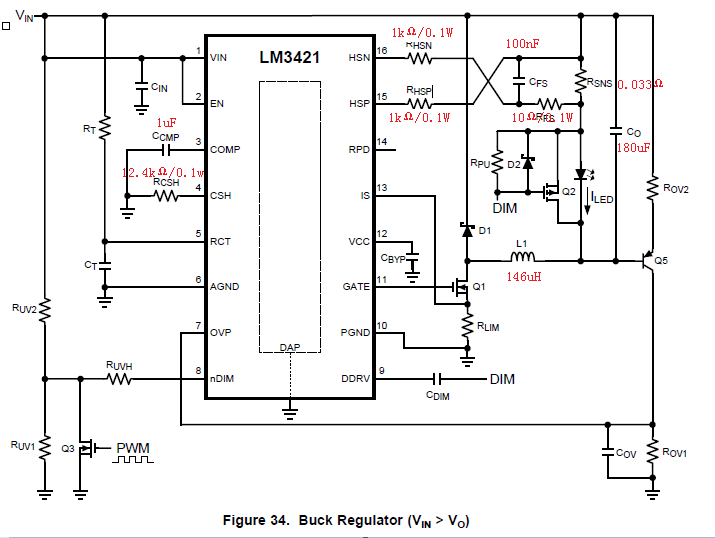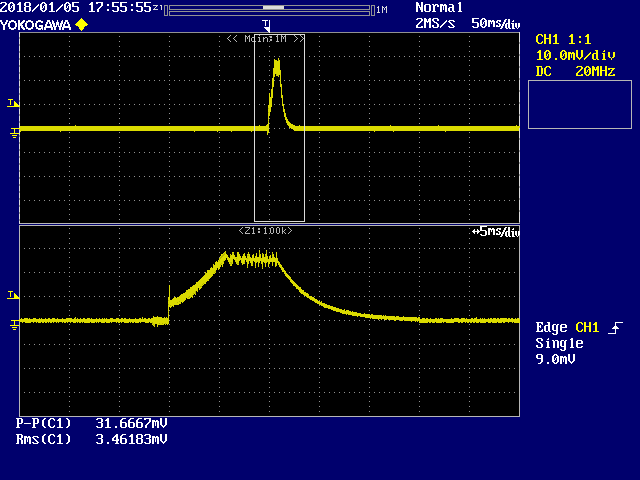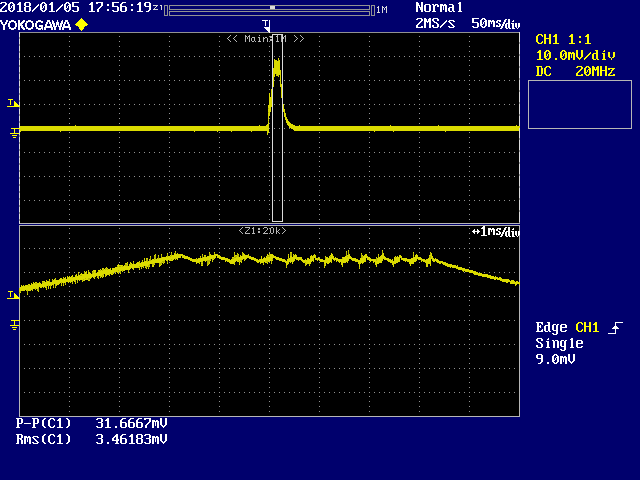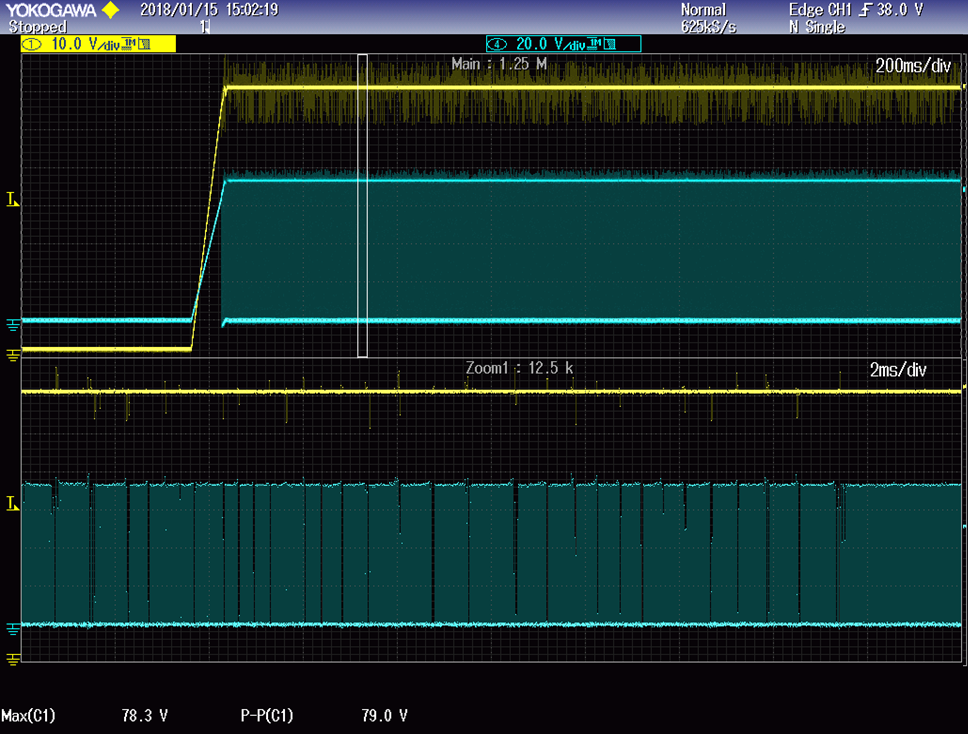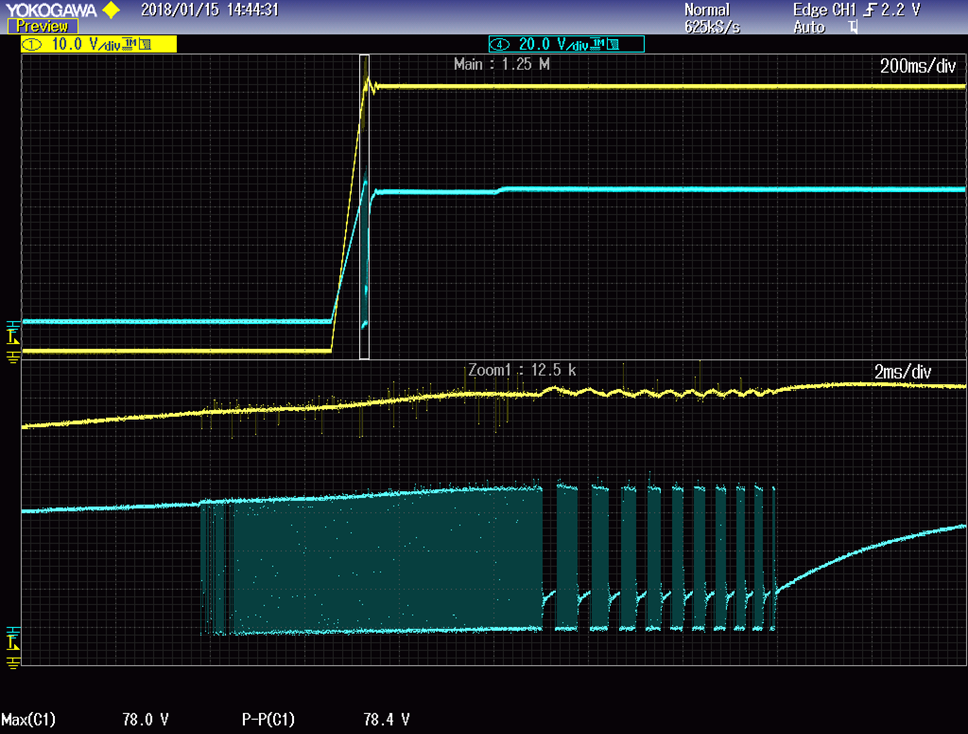Vin=70V,Vout=60V,Iout=3A
RHSN/RHSP:1kΩ/0.1W
The figure above is from the datasheet of LM3421. The problem is that when I turn on the power, there is about 10% chance that the RHSN and RHSP be burned down.
The folloing figure is the waveform of Iout when it happened.
(1DIV=1A)
Accroding to these figures, Iout is lower than 3A and a few seconds later,Iout becomes 0A.
But in normal circumstances, Iout will soon rise to 3.03A , and lasts for a long time.
Could you tell me why RHSN and RHSP often be burned? Is it because the rated power is too low?
-----------------------------------------------------------------------------
Addition(2018/01/15):
It seems that the circuit of over-voltage protect is in problem.
| ROV1 | 9.1 | kΩ |
| ROV2 | 460 | kΩ |
| COVP | 47 | pF |
1. When the circuit of over-voltage protect circuit is deleted: 50 times Power ON test, OK.
2. When the circuit of over-voltage protect circuit is still here : the RHSN and RHSP be burned down (about 10% chance).
I think it is that because the loop ‘Over-voltage protection→ return to normal’ is always been repeated, then RHSN/RHSP was burned.
But I don't think know why. Could you tell me the reason?
And there is always a strange beap when try to measure the RHSN/RHSP's voltage. So I can't get the waveform of it.
Could you show me the normal waveform?


